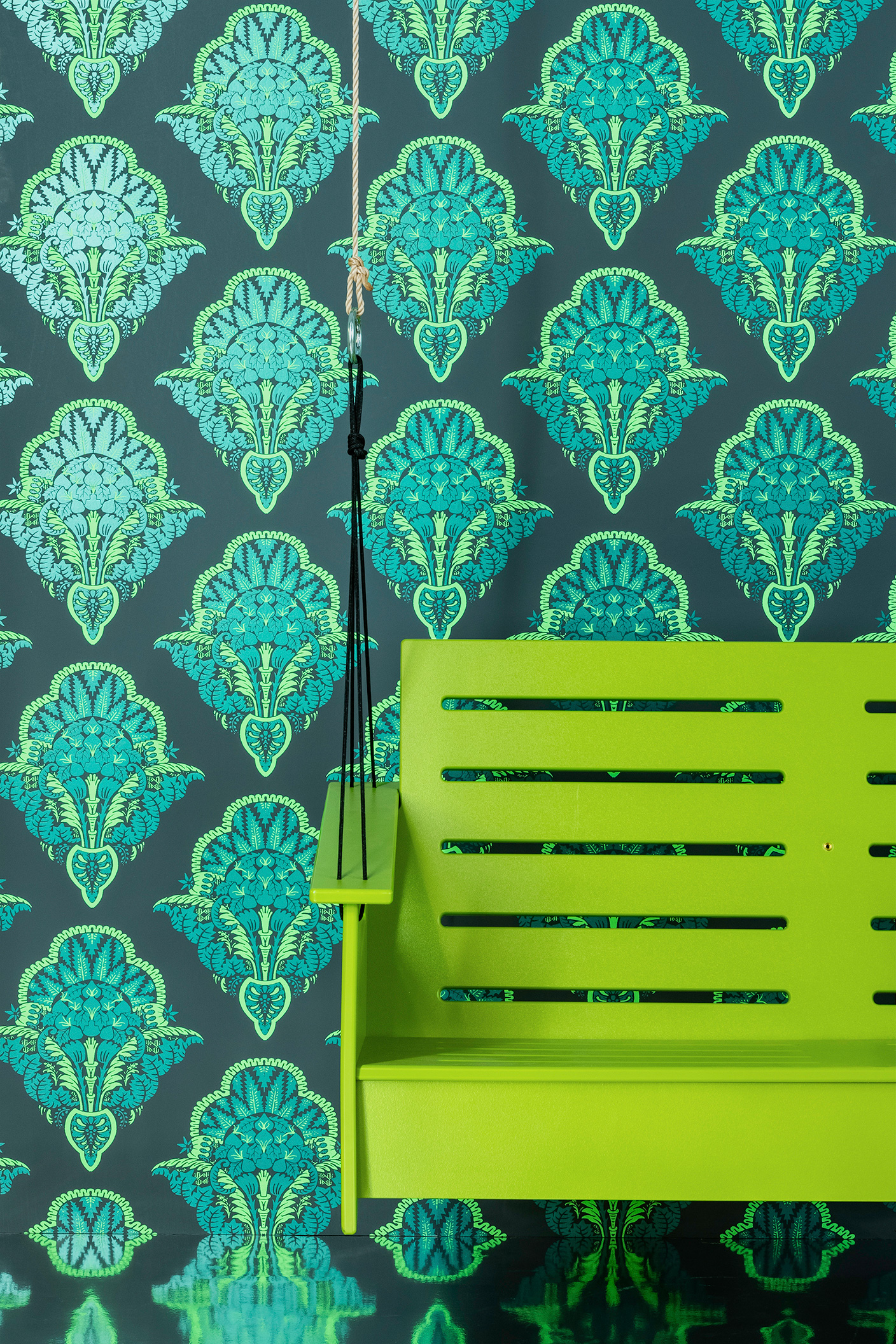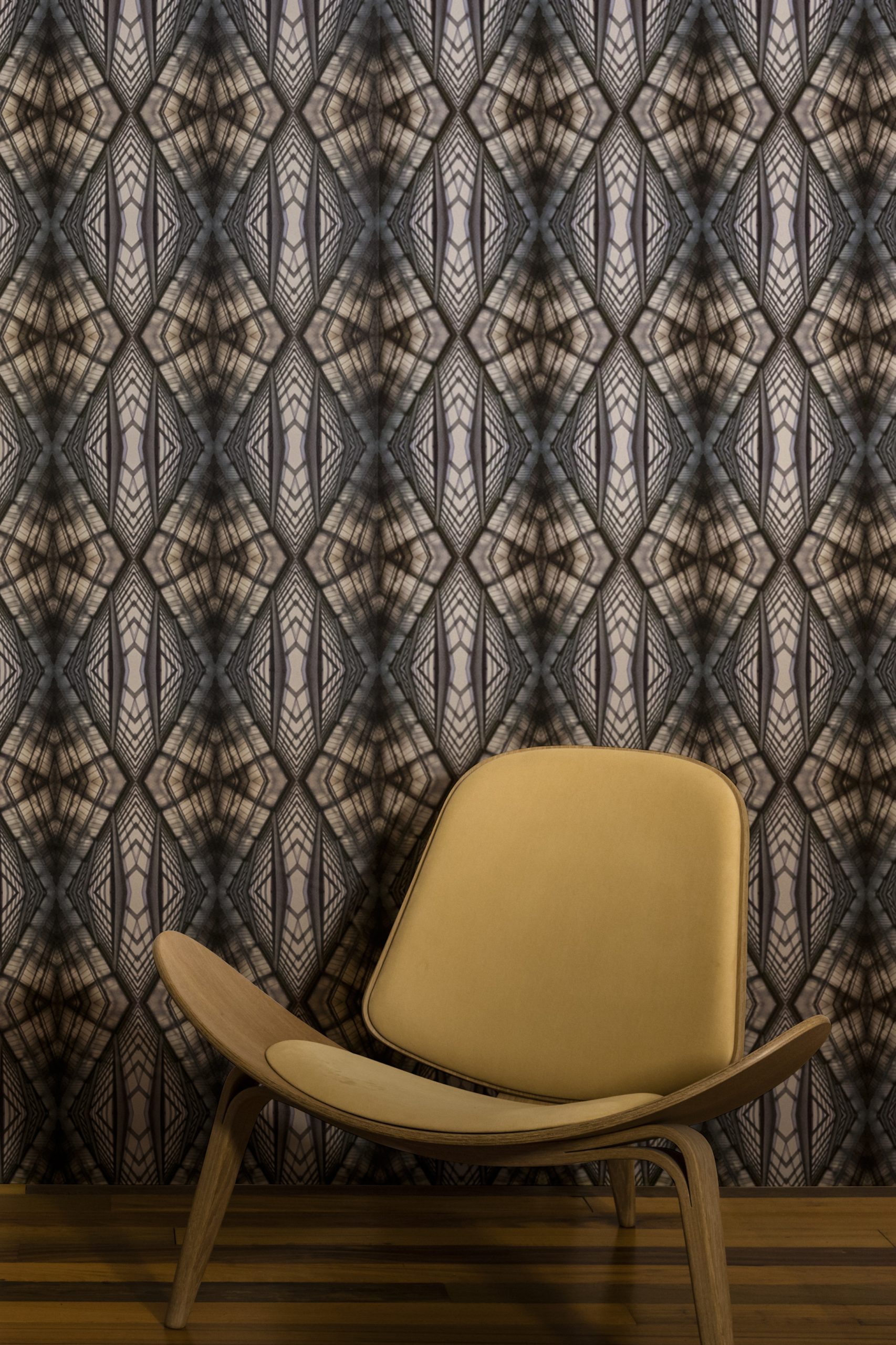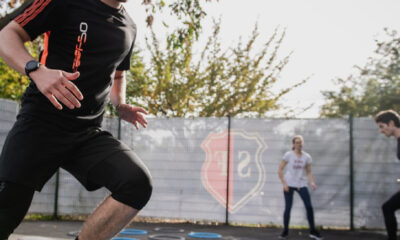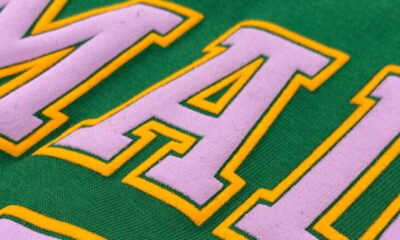Flavor Paper, simply stated, is a wallpaper company based in Brooklyn. But the shop is so much more than that. They offer both hand-screened prints and wide-format digital designs, using latex or eco-solvent inks and eco-friendly materials, all in-house. The pr ints are completely custom and range from scratch-and-sniff wallcoverings, like the shop’s 420-inspired Cannabliss or B-A-N-A-N-A-S!, a pop art homage to iconic screen printing with a – you guessed it – banana scent, to collaborations with the Andy Warhol Foundation of Visual Arts and a Fempower line made exclusively by women. As they say on their site: It’s not your grandmother’s wallpaper.
ints are completely custom and range from scratch-and-sniff wallcoverings, like the shop’s 420-inspired Cannabliss or B-A-N-A-N-A-S!, a pop art homage to iconic screen printing with a – you guessed it – banana scent, to collaborations with the Andy Warhol Foundation of Visual Arts and a Fempower line made exclusively by women. As they say on their site: It’s not your grandmother’s wallpaper.
Flavor Paper has tapped into a burgeoning market. Screen and digitally printed interior décor products – we’re talking everything from wallcoverings to couch cushions to curtains – are in high demand due to customization, e-commerce, and the era of social media, plus the advances in technology and the emergence of brand-new textile printers and software launching at tradeshows around the world (think Kornit, HP, Adobe, and more). Whether your clients are in hospitality, retail, or residential, their customers need it how they want it, when they want it (typically yesterday), and to be Instagram-worthy.
We have the numbers to prove it:
Smithers Pira’s “The Future of Decorative Print to 2023” report states the wallpaper/wallcovering, direct-printed objects, and flooring/furniture laminates market was valued at $18.9 billion in 2018 and is projected to reach $22.5 billion in 2023.
Global production of printed textiles is projected to reach 396.1 billion square feet by 2024 and the digitally printed wallpaper market is expected to grow at a CAGR of 25 percent, reaching a value of $7.74 billion by 2023 (increasing from $2.53 billion in 2018), according to FESPA.
 Read on for a Q&A with Jon Sherman of Flavor Paper to see how his company is profiting with both screen and digital offerings, and consider how your shop can benefit from this exciting trend.
Read on for a Q&A with Jon Sherman of Flavor Paper to see how his company is profiting with both screen and digital offerings, and consider how your shop can benefit from this exciting trend.
Q. What percentage of wallcoverings at Flavor Paper per month are screen printed? Wide-format digitally printed?
A. The volume of hand screened versus digital work varies from month to month. Occasionally Flavor Paper produces designs utilizing both methods for special projects. While we’ve historically seen a 50/50 split, wide-format production is growing faster now due to the scale of commercial projects that require 54-inch material.
Why do you offer both?
Since Flavor Paper opened up shop in 2003, our goal has been to evolve what wallpaper can and should be, and to provide clients with a menu (even off-menu) of options that help bring their vision to the wall. We don’t believe that one size fits all places or personalities. By offering both printing methods we’re able to explore all conventional wallcovering boundaries, break them, and stretch clients’ abilities to realize unique environments that are immersive, and 100-percent tailored to their individual taste.
What do your clients typically ask for with regard to digital or hand screened? Are they educated in either printing process?
Our clients often come to us with a preconceived notion of what they want. But, once we dig into the overall idea of a project, we generally find that what they had in mind is in fact not what they need. For example, clients tend to like the sound of hand-screened wallpaper because it
carries cachet, but sometimes the desired aesthetic is best achieved digitally. To ensure the success of every venture, from concept to completion, we work closely with clients to first establish the mood they want to create in a space and then let that dictate the process that makes the most sense to give it life, which can be driven by price, scale, durability, or aesthetics.
What are the benefits to digital vs. screen, and vice versa?
Nothing can really top the bespoke quality of hand-screened work with its rich detail and texture, and that it’s a one-of-a-kind piece of art at every run. The process also allows layering in unexpected special effects like scratch-and-sniff scents, Day-Glo, and invisible inks [a black light reveals the full effect]. However, as with any fine art, there are limitations and some patterns just can’t be hand screened. Printing in wide format has really allowed us to delve into innovative territories that traditional silk screening does not due to either cost or inherent capability constraints. The beauty of digital wallpaper lies in the ultimate customizability with colors, shading, and scale, and the dynamic, photographic reality that can be realized.
It can be endlessly manipulated, and that limitless playing field is exciting.
Do certain interior spaces benefit from using one printing process vs. the other?
High-traffic commercial settings demand digital production to reduce the number of seams (weak points), speed up installation, and increase durability. The vibe, visual, and emotional impact clients are looking to infuse into a space informs what process is best suited to realize their vision in other situations.

 Case Studies2 months ago
Case Studies2 months ago
 Art, Ad, or Alchemy2 months ago
Art, Ad, or Alchemy2 months ago
 Andy MacDougall2 months ago
Andy MacDougall2 months ago
 Columns3 weeks ago
Columns3 weeks ago
 Editor's Note3 weeks ago
Editor's Note3 weeks ago
 Marshall Atkinson3 weeks ago
Marshall Atkinson3 weeks ago
 Thomas Trimingham2 months ago
Thomas Trimingham2 months ago
 News & Trends2 months ago
News & Trends2 months ago
 ints are completely custom and range from scratch-and-sniff wallcoverings, like the shop’s 420-inspired Cannabliss or B-A-N-A-N-A-S!, a pop art homage to iconic screen printing with a – you guessed it – banana scent, to collaborations with the Andy Warhol Foundation of Visual Arts and a Fempower line made exclusively by women. As they say on their site: It’s not your grandmother’s wallpaper.
ints are completely custom and range from scratch-and-sniff wallcoverings, like the shop’s 420-inspired Cannabliss or B-A-N-A-N-A-S!, a pop art homage to iconic screen printing with a – you guessed it – banana scent, to collaborations with the Andy Warhol Foundation of Visual Arts and a Fempower line made exclusively by women. As they say on their site: It’s not your grandmother’s wallpaper. Read on for a Q&A with Jon Sherman of Flavor Paper to see how his company is profiting with both screen and digital offerings, and consider how your shop can benefit from this exciting trend.
Read on for a Q&A with Jon Sherman of Flavor Paper to see how his company is profiting with both screen and digital offerings, and consider how your shop can benefit from this exciting trend.


















